“Yellow fever has been detected in a Dutch patient. The patient has been in Suriname and had contracted the illness there. That is remarkable because yellow fever has not been established in Suriname for 45 years.” Reported the RIVM, the Dutch National Institute for Public Health and the Environment, a week after my arrival in Suriname.
Let me introduce myself a bit more: I am a Biology student, specialising in animal adaptation and behaviour. My focus lies on mosquitoes. Why? You can read that in my previous mosquito blog! I am specializing in the ecology of mosquitoes that can transmit infectious diseases. At the moment I am in Paramaribo, Suriname, for my internship. I will write a number of blog articles about this in the coming months.
I came here to test which traps and attractive compounds are best to catch the mosquitoes that can transmit Zika virus. Previously, great success has been achieved in the fight against malaria with traps and odours that attract malaria mosquitoes. In addition, we want to investigate the status of insecticide resistance in the city. I do this with the help of people from the Surinamese ‘BOG’, the Public Health Office.
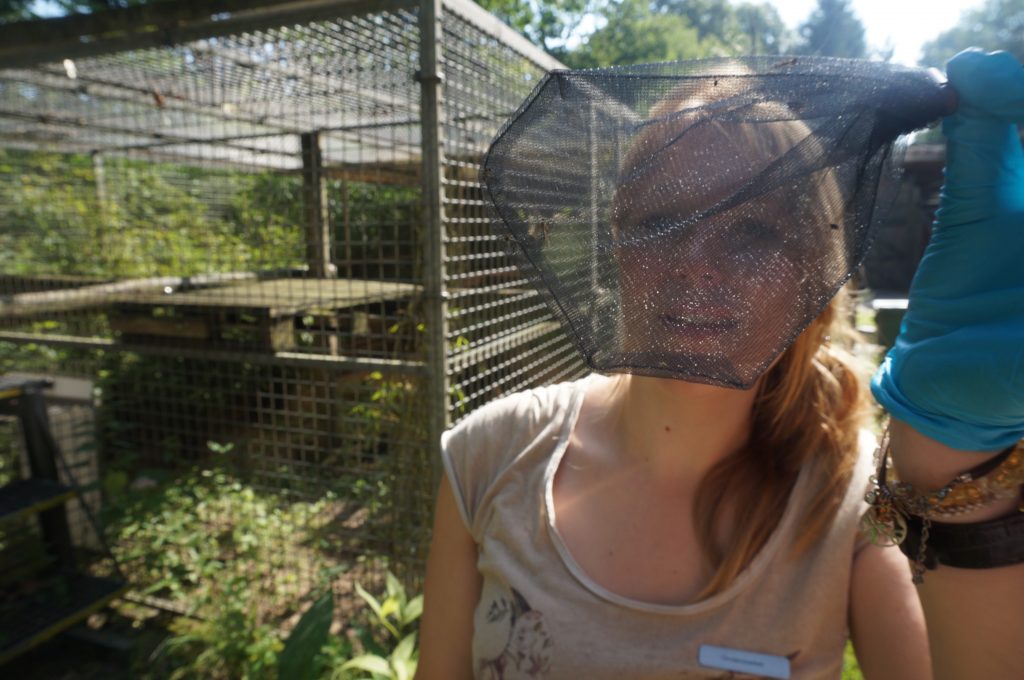
Here I am checking the mosquito catch of the day. © Tessa Visser
Yellow fever: commotion on the Brownsberg
As usual in the field of research, not everything goes as planned. The BOG was immediately in turmoil after the news of the unexpected yellow fever patient. The patient had been to a popular tourist destination in the interior, the Brownsberg, and had not been vaccinated against the disease.
Employees from various departments immediately discussed all measures that needed to be taken. People from the medical mission will be used to vaccinate the local population, and environmental inspectors from the BOG to fight mosquitoes and breeding grounds.
But which mosquito is actually the culprit of all this commotion? The answer to this question helps to decide the correct preventive measures in the environment. Not all mosquitoes are the same. They can show very different behaviour: for example, some species are active during the day, others are mostly night-active, or they like a different kind of breeding place. In addition, it is important to determine which species of mosquitoes are capable of transmitting yellow fever in the risk area. The entomology department of the BOG, where I do an internship, can carry out this type of research. My colleagues have placed mosquito traps for 4 days on the Brownsberg and in the adjacent village ‘Brownsweg’.
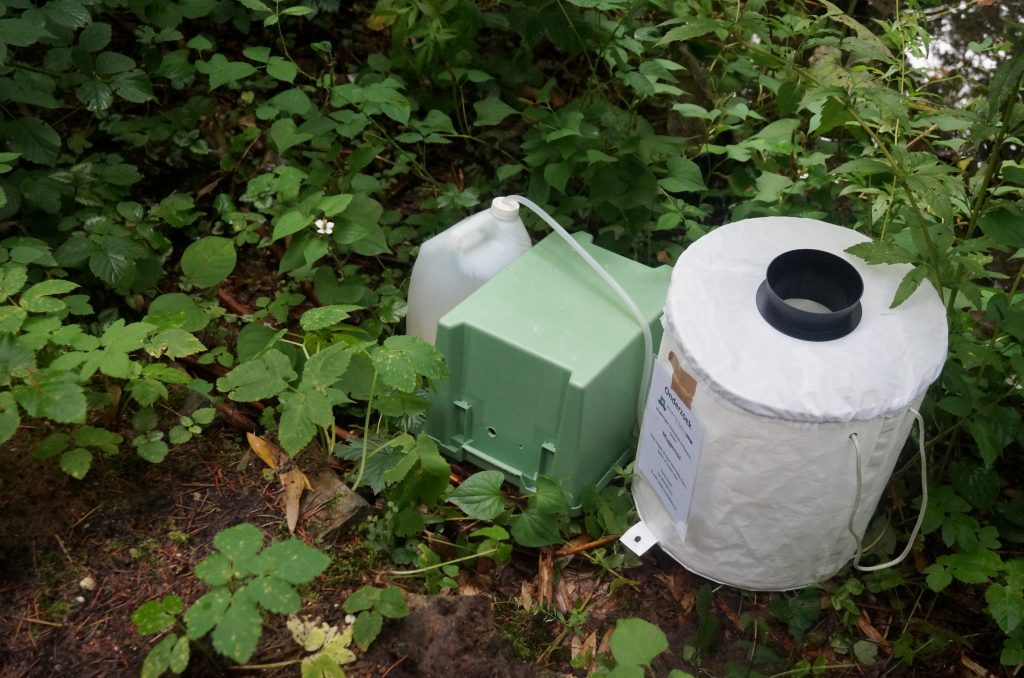 This is the mosquito trap used on the Brownsberg: the BG-sentinel from Biogents (right). Under the green box is a battery to drive the fan into the trap. That fan spreads the odours out of the trap and sucks the mosquitoes inside. The jerrycan contains a solution of sugar, yeast and water to produce carbon dioxide: an attractive substance for mosquitoes. © Tessa Visser
This is the mosquito trap used on the Brownsberg: the BG-sentinel from Biogents (right). Under the green box is a battery to drive the fan into the trap. That fan spreads the odours out of the trap and sucks the mosquitoes inside. The jerrycan contains a solution of sugar, yeast and water to produce carbon dioxide: an attractive substance for mosquitoes. © Tessa Visser
A day in the field
It is half past five on Sunday morning and time to get up. An hour later I am waiting at the BOG. From there it is another three hours drive to the Brownsberg. After having picked up some colleagues on the route, we are really on our way. In the meantime, it has become light and there is a Hindustani radio station to which my colleagues cheerfully sang along. Around 9 am we reach the village and drive down the paved path towards the dirt road to the mountain. It will be a climb of 500 meters. It is the first time in the jungle for me and it smells wonderfully tropical!
The roads in Suriname are not always like the ones in the Netherlands
After to have driven for an hour over a lot of bumps with a speed of 10 km/h, we come to stand still for an impossible road. Because of last night’s rain, a slope has been transformed into a mudslide. More people have stopped along the road, not sure how to proceed now. There is also a van with Dutch tourists. Fortunately, a few people have machetes in their trunk. With it, leaves and branches are collected to lay on the slope. In the meantime, I took a chance to give Dutch tourists some mosquito-related advice. After an hour of work, the slope is full of leaves and the cars have enough grip to continue the journey.
Emptying mosquito traps
When we are on top of the mountain it slowly begins to drip, which continues until it’s pouring. The rain in Suriname can take a long time, so we quickly empty the mosquito traps and pack them. Unfortunately, we didn’t bring umbrellas. In addition to mosquito traps, oviposition traps were placed: traps where some mosquitoes like to lay eggs. These eggs can then be grown. The species can then be determined from the hatched larvae and adult mosquitoes.
We seek shelter for lunch and enjoy the delicious roti made by one of the drivers. After the lunch break, we go down the mountain and pick up some mosquito traps and oviposition traps in the village: at the outpatient clinic, the police station and at people’s homes.
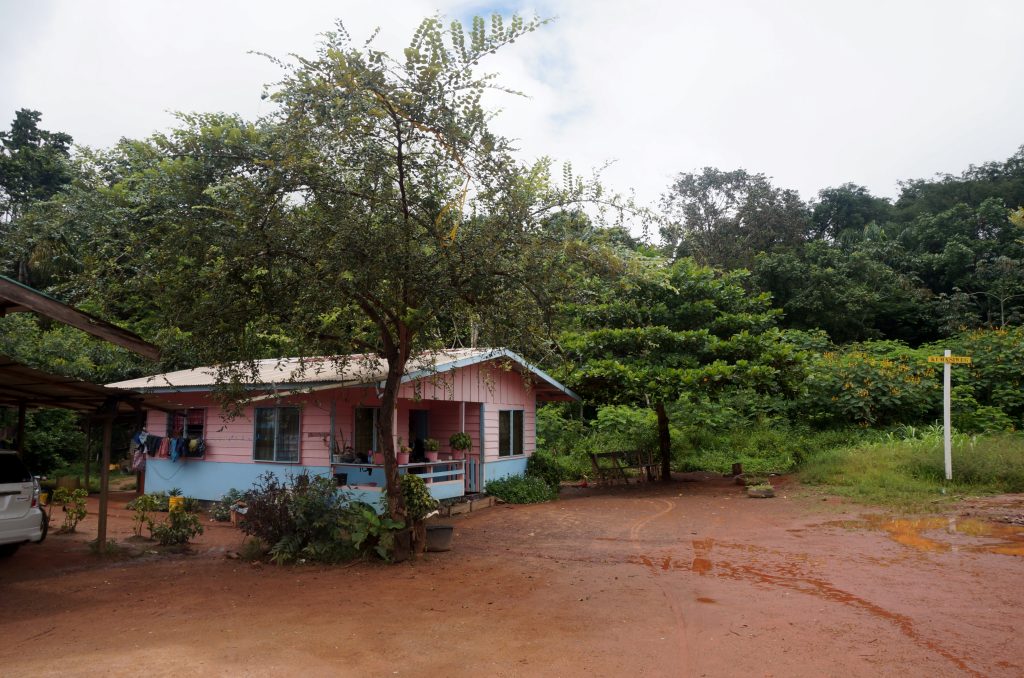 One of the houses in Brownsweg village where a mosquito trap was placed. © Tessa Visser
One of the houses in Brownsweg village where a mosquito trap was placed. © Tessa Visser
Around 5 o’clock we are back at the entomology laboratory of the BOG. We clean up all the stuff and prepare for the next day. Then we’re finally finished. During the rest of the week, we will look at the catches and determine the mosquito species.
For further information about the mosquito research group of Wageningen University & Research, I would like to refer you to the mosquito dossier.
This blog post was originally written in Dutch for the Global One Health blog of Wageningen University & Research.

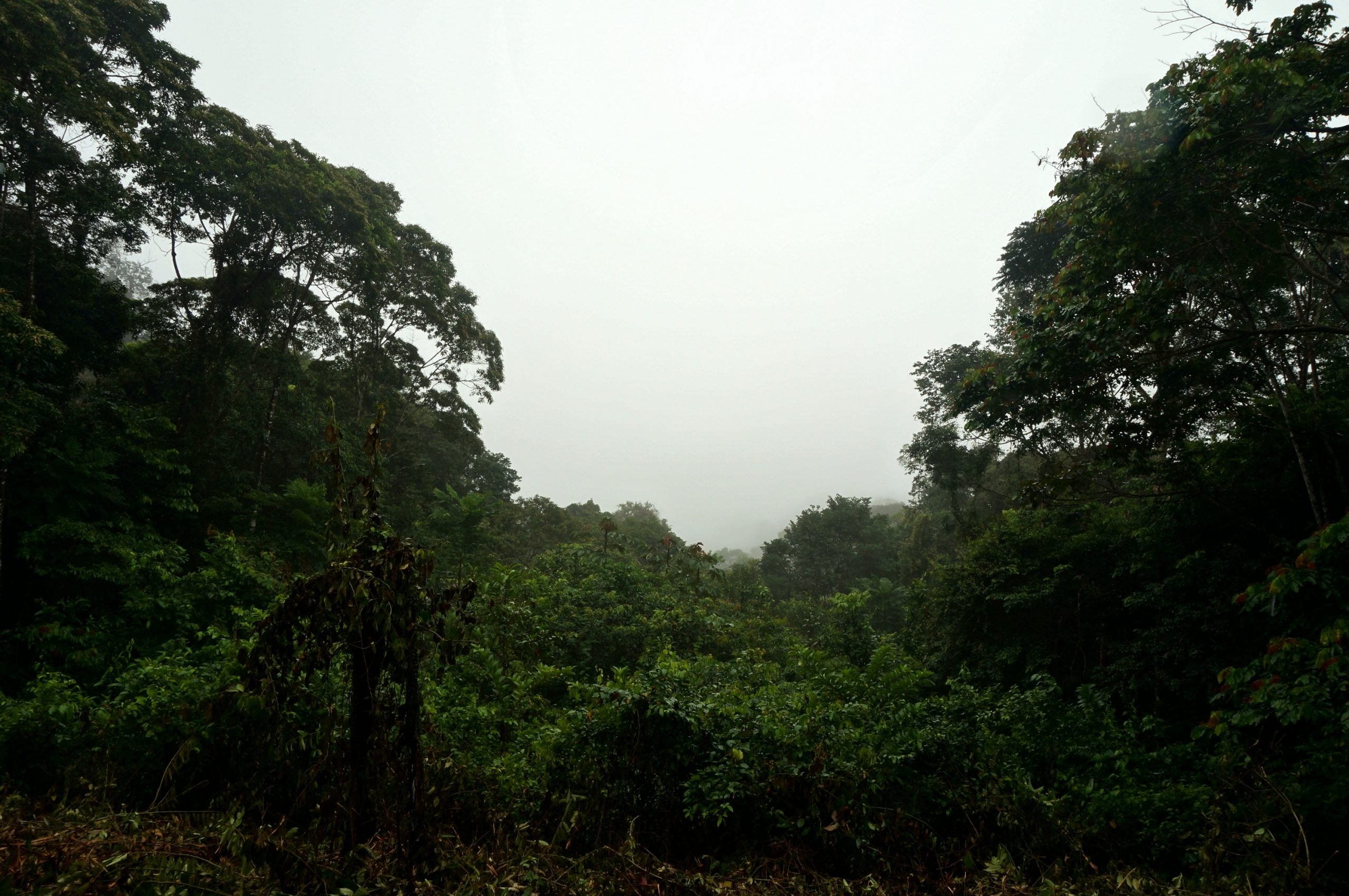
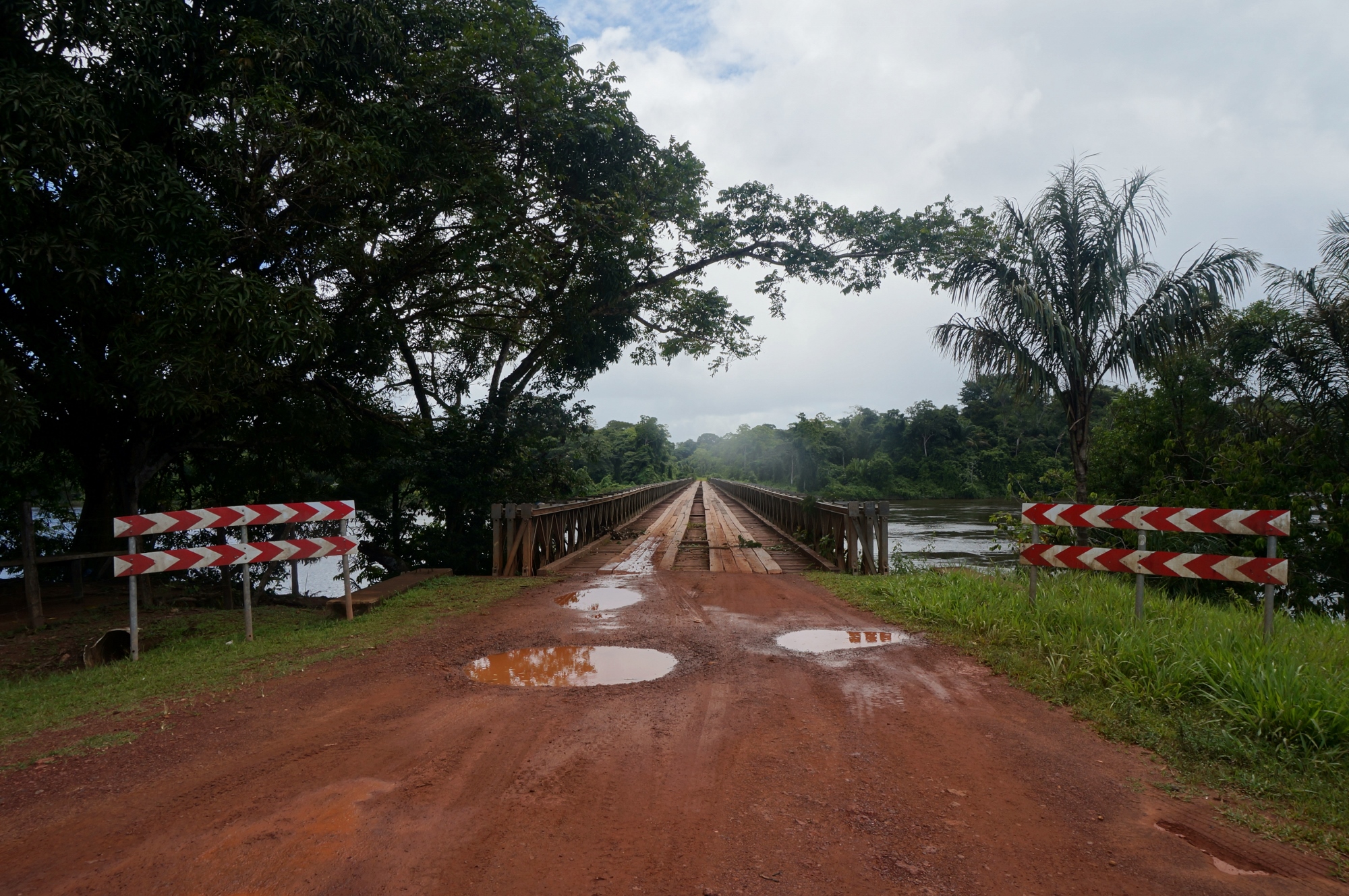
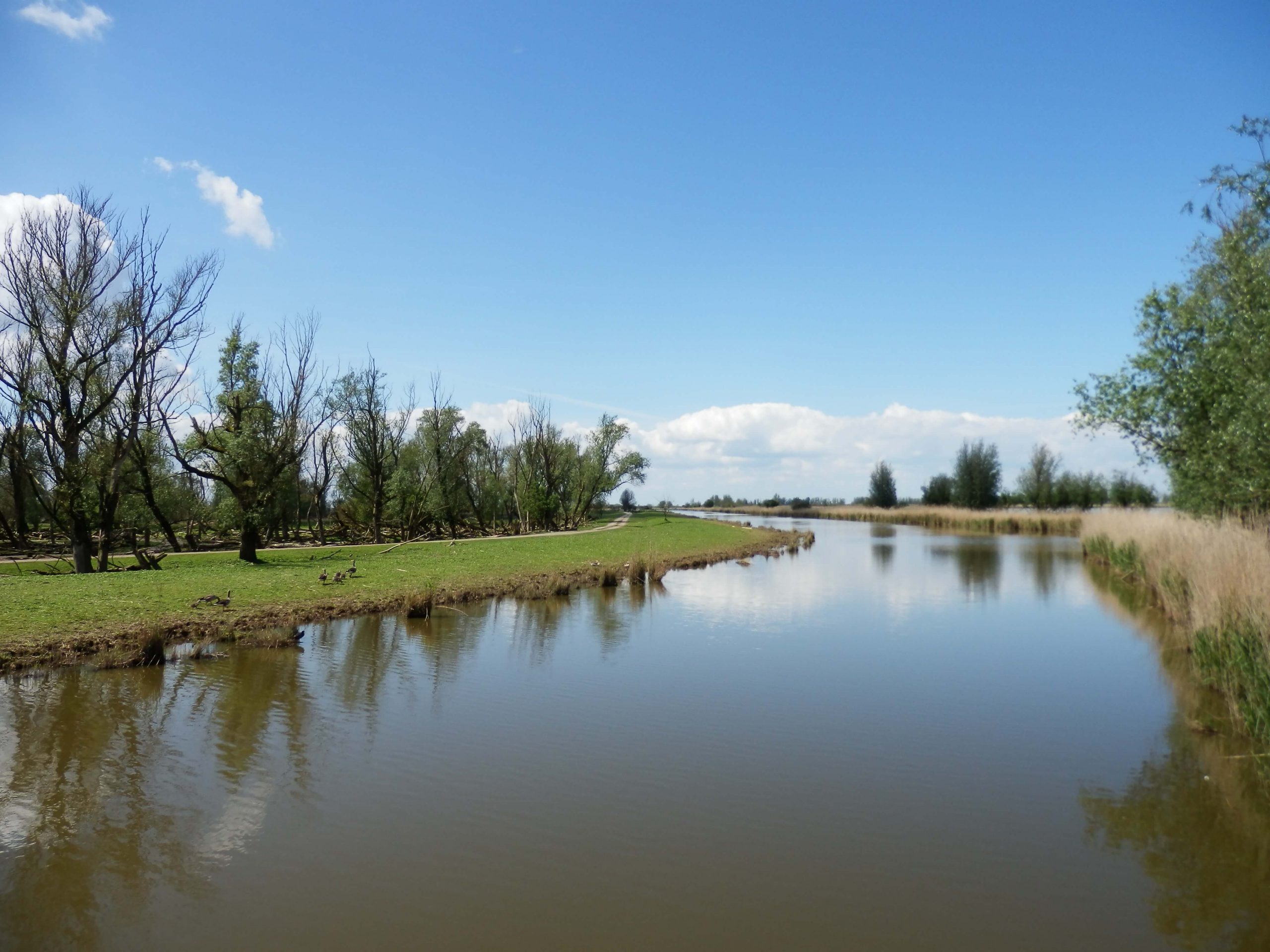
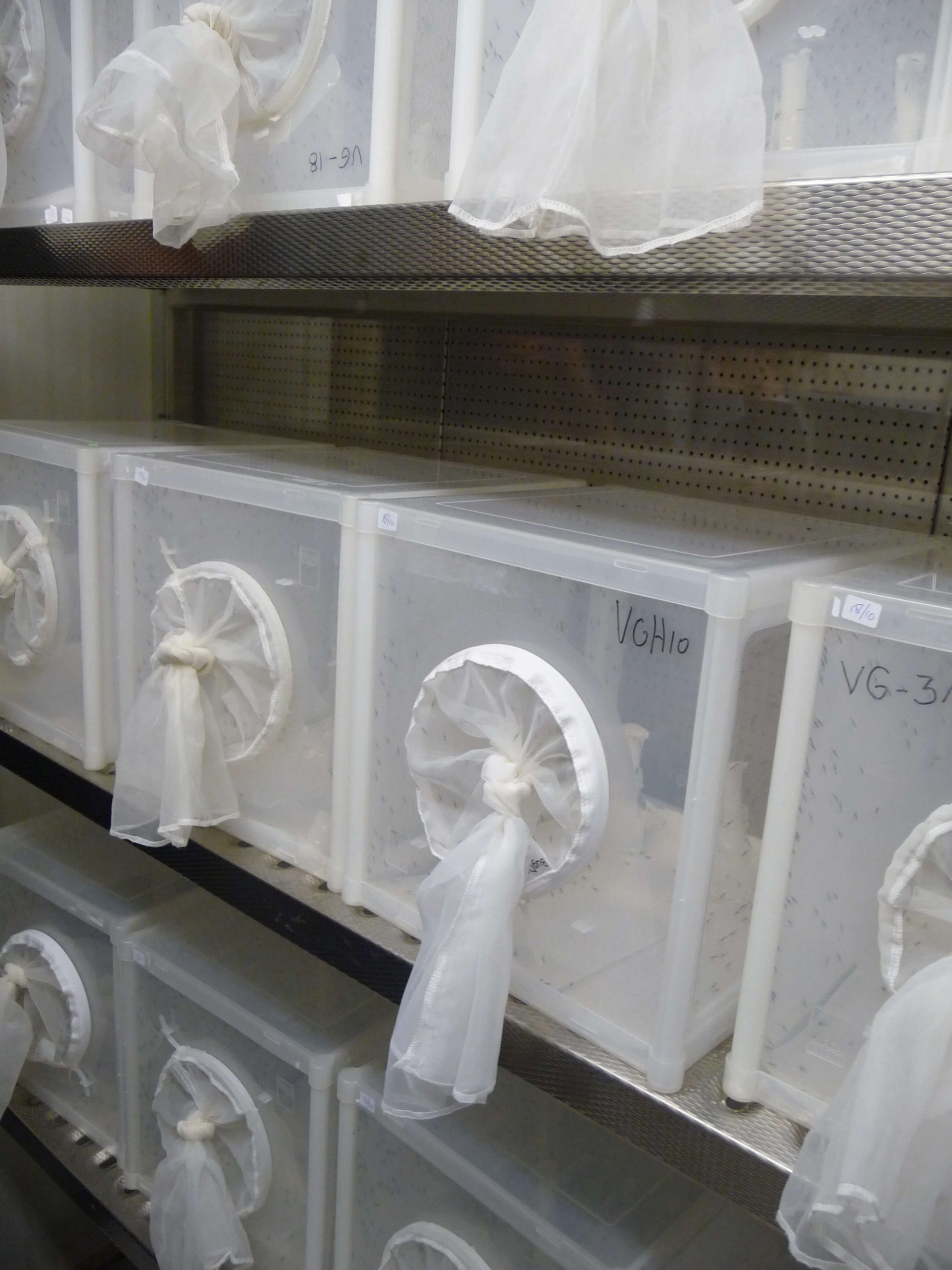
1 Comment
Mosquito research in Suriname: malaria – Tessa's Cup of Tea
February 7, 2018 at 9:58 am[…] Human Landing Catches, I also placed mosquito traps and ovitraps. Besides the BG-sentinel (see the previous blog), I also brought the Suna trap. The trap looks slightly different, but the operation method is the […]